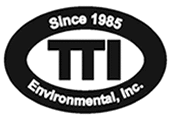
In the wake of catastrophic weather events such as floods, hurricanes, or tornadoes, the aftermath extends beyond the visible destruction, unveiling a host of invisible threats that can complicate the recovery process. While the immediate focus may be on the external damage, water damage, mold growth, and potential contamination silently jeopardize property integrity and occupant health. Industrial hygiene teams specialize in revealing these hidden threats and crafting strategic solutions that comprehensively mitigate risks.
PREVENTATIVE MEASURES:
- Preparedness Planning: Industrial hygienists assist in developing emergency preparedness plans tailored to specific weather events, such as hurricanes, floods, or wildfires. These plans outline procedures for evacuation, sheltering, and response to potential hazards.
- Risk Assessment: Before a weather emergency strikes, industrial hygienists conduct risk assessments to identify potential hazards and vulnerabilities within the facility. This includes evaluating structural integrity, hazardous material storage, and environmental risks.
- Emergency Response Coordination: During a weather emergency, industrial hygienists work closely with facility managers and emergency response teams to coordinate efforts. They provide expertise on health and safety protocols, including the use of personal protective equipment (PPE) and evacuation procedures.
- Environmental Monitoring: Industrial hygienists monitor environmental conditions during and after a weather event to assess potential risks to workers and the surrounding community. This includes monitoring air quality, water contamination, and hazardous material releases.
- Worker Health Protection: Industrial hygienists prioritize the health and safety of workers by implementing measures to minimize exposure to hazardous conditions. This may involve providing guidance on respiratory protection, proper hygiene practices, and decontamination procedures.
- Training and Education: Industrial hygienists conduct training sessions for employees on emergency procedures, hazard recognition, and response protocols. This ensures that workers are prepared to respond effectively in the event of a weather emergency.
POST EVENT RECOVERY:
- Moisture Mapping and Healthier Indoor Environments: Advanced moisture mapping techniques identify concealed pockets of moisture, mitigating mold and bacterial growth, and ensuring a healthier indoor environment for occupants.
- Fungal and Bacteria Testing: Unveiling Water Categorization: Industrial hygienists conduct testing to confirm the presence of contaminants, assisting in water categorization and guiding restoration teams in tailored mitigation approaches.
- Addressing Contaminants: Asbestos and Lead Testing: Swift identification of hazardous materials like asbestos and lead enables strict handling and disposal protocols, ensuring safety for restoration teams and occupants.
- Customized Restoration, Elevated Reassurance: Collaboration with restoration teams to create detailed protocols expedites recovery and enhances safety by mitigating impacted areas effectively.
- Navigating Compliance, Uplifting Confidence: Industrial hygienists navigate complex post-event regulations, ensuring adherence to industry standards and providing confidence to restoration teams and property owners.
Partnering with an expert industrial hygiene firm goes beyond physical restoration – through collaborative efforts with restoration teams, these inspections and remedial plans assure a safe, habitable space.
For more information on Industrial Hygiene services contact:
Karen Buniak, VP Business Development at karenb@ttienv.com or Tim Popp, VP Environmental Services at timp@ttienv.com

